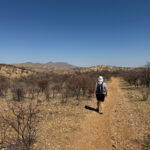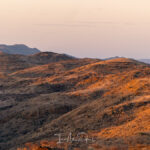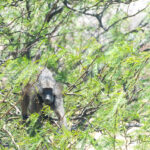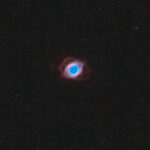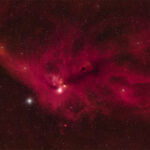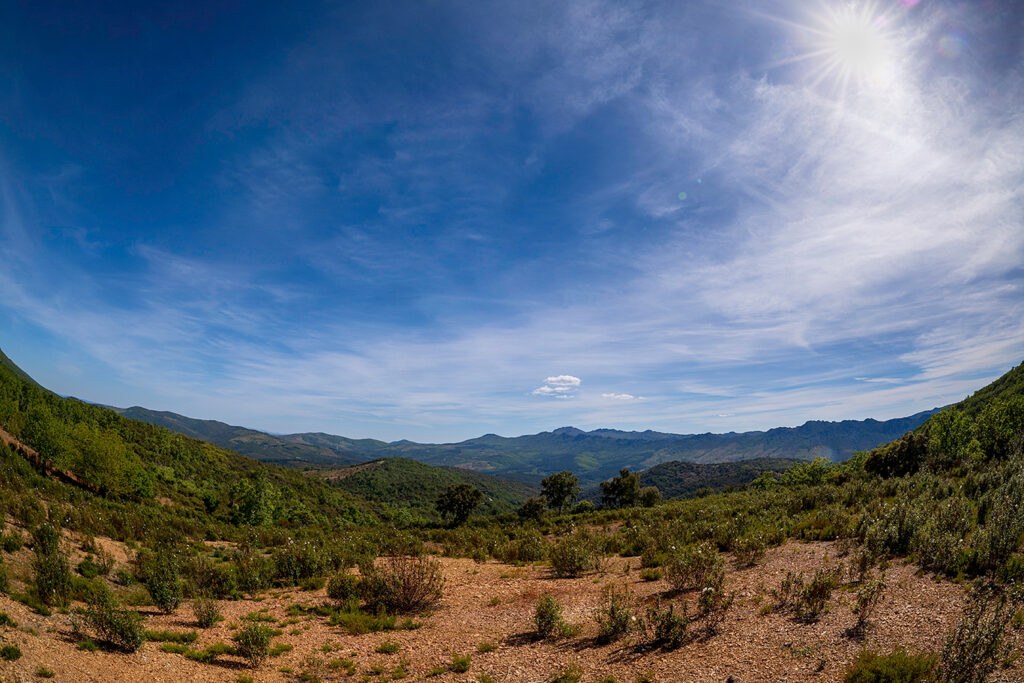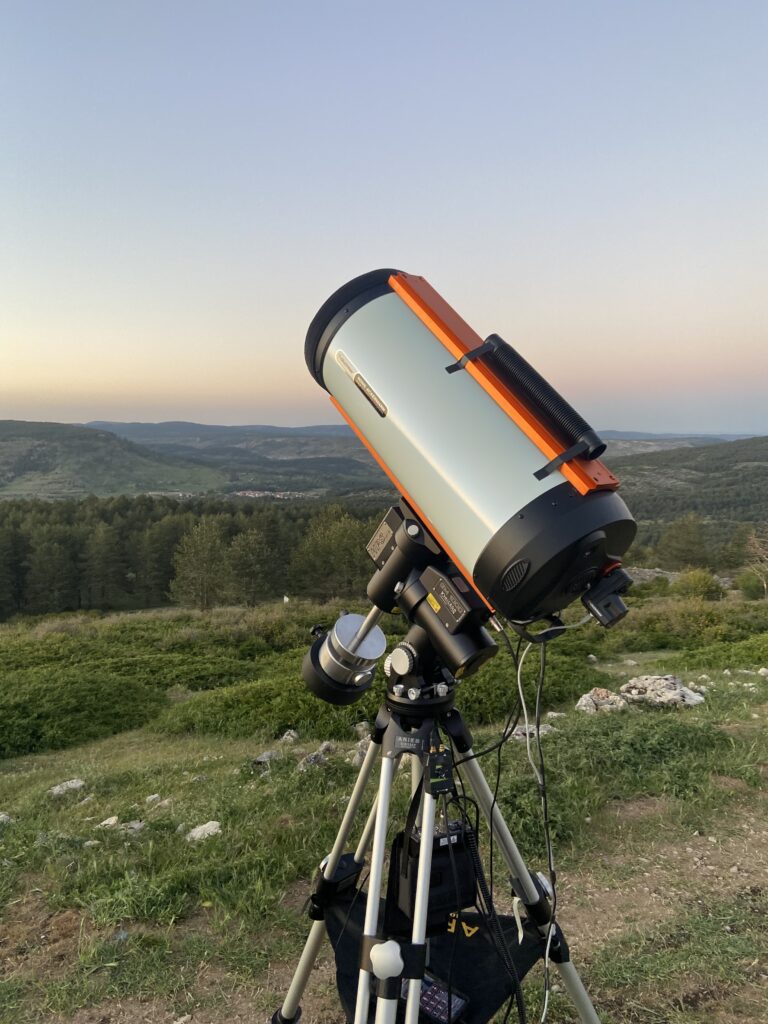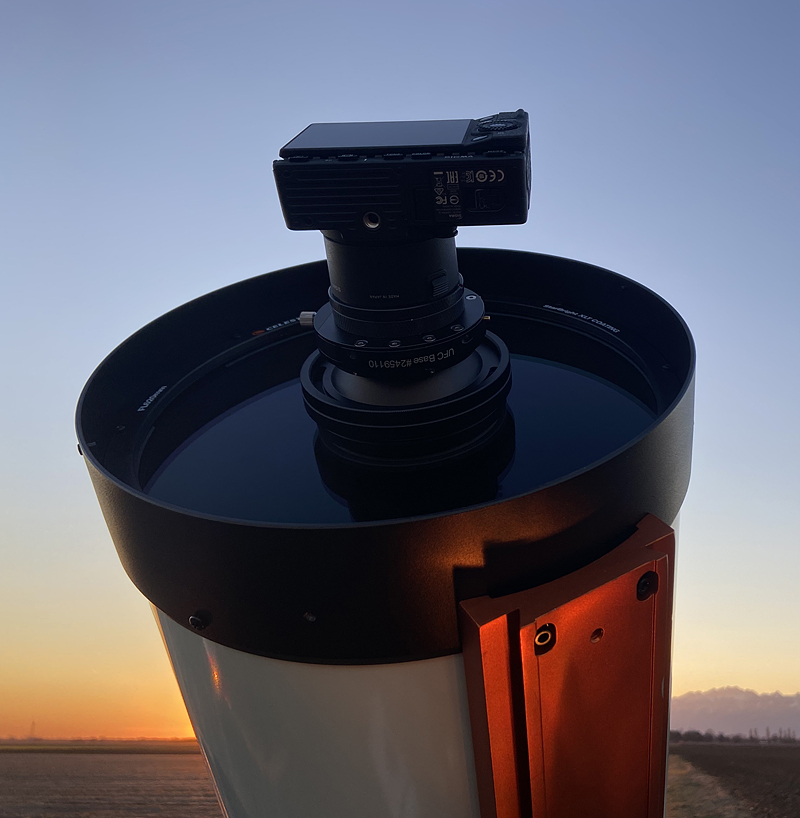Astrofotografie auf Hakos Namibia (Deutsch)
Auf Tour auf Hakos Astro Farm in Namibia
Schon zu Beginn unserer Zeit der Astrofotografie, während der Auseinandersetzung mit dem Thema Lichtverschmutzung, tauchte der Begriff „Namibia“ ab und zu auf. Damals allerdings noch als etwas Surreales und, wenn überhaupt, sehr weit in der Zukunft liegendes. Überhaupt haben wir bei all unseren Reisen an viele wunderschöne Orte der Welt, Afrika stets ausgespart, vielleicht sogar vermieden. Keinesfalls deshalb, weil der Kontinent nicht reizvoll wäre zu bereisen, aber einerseits gab es so viele andere Orte auf unserer Liste und andererseits war uns möglicherweise zumindest unterbewusst klar, dass wir „infiziert“ würden mit dem „Afrikavirus“ und wir einen neuen Sehnsuchtsort finden würden.
Kleiner Spoiler direkt zu Beginn… unsere „Befürchtung“ war richtig.
Trotzdem war es in vielen Gesprächen ein Thema, dass man eines Tages dorthin gehen würde, die Idee einen Himmel ohne Lichtverschmutzung zu erleben war das Eine, aber das Andere war der Wunsch einmal den Südhimmel zu sehen.
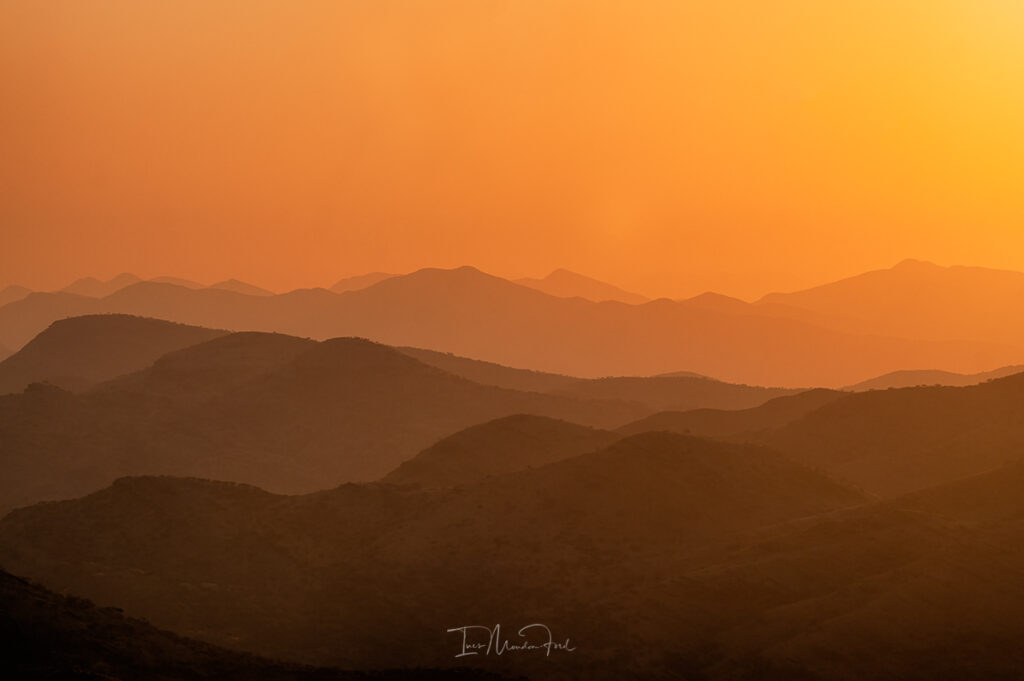
Nachdem wir in diesem Jahr ein paar gute Nächte in Spanien und Kroatien hatten, aber sonst vom Wetter her eher glücklos waren, was die Astrofotografie betrifft, diskutierten wir ernsthaft über eine Reise nach Namibia. Nach viel Recherche und etlichen Emails stand unsere Entscheidung fest, nächstes Jahr 2025 gehen wir nach Hakos, einer Astrofarm in den Bergen südwestlich von Windhoek, auf der Großen Randstufe Namibias zwischen dem Savanna Hochplateau und der Namibwüste. Wir buchten für Mai 2025 und begannen uns schon fast ein Jahr im Voraus darauf zu freuen.
Trotz dessen, dass Mark die Möglichkeit hatte über eine Remote Station einige Daten zu sammeln und wir auch weiterhin ziemlich glücklos dem klaren Neumondhimmel in Europa nachjagten, baute sich etwas Frust auf, wegen mangelnder Möglichkeiten zur Astrofotografie. Die Sehnsucht einmal wieder unter einem klaren Nachthimmel zu stehen mit unserem Equipment wuchs und einige verrückte Ideen kamen auf.
Eine davon hieß „Namibia“ noch dieses Jahr und je länger wir darüber nachdachten, umso weniger verrückt erschien uns diese Idee und nachdem es tatsächlich überraschend noch freie Kapazitäten im September gab, wurde kurzerhand und spontan gebucht.

Die größte Herausforderung bestand zunächst darin, unser ganzes Equipment sicher nach Namibia zu bekommen. Wir nahmen den Direktflug, um mögliche Verluste und Beschädigungen zu minimieren. Trotzdem eine Herausforderung zwei 10 micron GM1000 HPS Montierungen, ein Celestron RASA 11, ein Oskar TS94 EDPH und all die vielen Zubehörteile, Computer usw., nebst unserer Gepäckstücke, einzuchecken, aber auch das ging zunächst recht problemlos. Dachten wir… bis zur Sicherheitskontrolle… Wir hatten die beiden Stangen für die Gewichte im Handgepäck, das stellte sich als Problem heraus, zu gefährlich. Im Kopf lief eine kleine Diskussion ab, schließlich ist ein Teleobjektiv, nebst Kamera nicht minder schwer und massiv, aber das stellt kein Problem dar, aber die Diskussion tatsächlich zu führen ersparten wir uns, nicht, dass noch mehr „gefährliche Gegenstände“ gefunden werden. Das bedeutete, dass Mark die ganze Prozedur noch einmal durchlaufen musste, zunächst rückwärts, um noch ein Zusatzgepäck einzuchecken, dann nochmal in die „richtige Richtung“. Glücklicherweise hatten wir mit einiger Zeitverzögerung gerechnet und waren sehr lange vor Abflug am Flughafen.
Aber irgendwann hatten wir alles geschafft und saßen im Flugzeug, um ca. 10 Stunden später in Windhoek zu landen. Relativ langsam, aber alles, in allem recht problemlos durchliefen wir dort die Einreiseformalitäten und ungefähr eine Stunde nach der Landung standen wir mit all unseren Kisten und Koffern und Taschen im Sonnenschein von Namibia und wurden direkt von Friedhelm begrüßt.


Der Flughafen in Windhoek ist winzig und die Flugzeuge, die dort täglich starten und landen an einer Hand zu zählen, aber das Außenrestaurant ist hübsch und da wir noch auf zwei Jungs aus Dänemark warteten, die mit der zweiten Maschine aus Frankfurt ankamen, hatten wir Gelegenheit für einen Kaffee, den hatten wir wirklich nötig.
Dann ging es los, wir saßen im Auto zur Farm, unser Abenteuer konnte beginnen. Ein kurzer Abstecher um die Christuskirche, das Wahrzeichen von Windhoek zu sehen, dann ging es zunächst auf asphaltierten Straßen, später auf Schotterpisten Richtung Hakos. Müde, aber gleichzeitig voller Neugier ließen wir diese karge, trockene, aber gleichzeitig faszinierende Landschaft auf uns wirken. Die Affen am Straßenrand, ein Kudu in der Ferne und heh, da sind zwei Giraffen. Welcome in Africa.
Wir wissen nicht, ob einem diese Fahrt irgendwann langweilig vorkommen wird, aber im Moment ist das unvorstellbar und jeder Blick wundervoll.
Wenn dann in der Ferne die Farm auftaucht, das Schild mit dem Namen „Hakos“ dann fühlt man sich bereits wirklich weit weg von all den Dingen, die den Alltag betreffen, von Arbeit, von jedwedem Stress, man lässt all diese Dinge hinter sich, ein Gefühl was sich je länger wir da sind noch verstärken sollte.
Die Hakosfamilie begrüßte uns sehr herzlich und obwohl wir all diese Menschen vorher nicht kannten, fühlten wir uns von der ersten Minute an wohl und willkommen.



All unsere Technik hatte den Flug und die ruckelige Autofahrt dem ersten Anschein nach gut überstanden und bereits am ersten Nachmittag und Abend wurde alles aufgebaut.
Als dann die Sonne langsam dem Horizont entgegen ging, die Schatten länger wurden und der Abend nahte erlebten wir das erste Mal dieses unfassbar schöne und so besondere Licht, ein Licht was mit nichts vorher erlebtem vergleichbar ist und welches man nicht nur sehen, sondern sogar fühlen kann. Welcome in Africa. Das erste Abendessen bei Sonnenuntergang, mit dem Blick auf die Silhouetten der Hakosberge und dem Gamsberg in ganz wunderbarer Gesellschaft rundete diesen ersten, so positiven Eindruck ab. Typisch für eine Region nur 23 Grad südlich des Äquators gibt es keine lange Dämmerung, der Himmel geht über von tiefsten Orange, Cyanblau in die Dunkelheit der Nacht. Auf diese Nacht waren wir äußerst gespannt.
Obwohl wir selbst zwar sehr naturnah, aber in einer sehr hellen und lichtverschmutzten Gegend leben, haben wir in den vergangenen Jahren schon wirklich gute Himmel gesehen. Bortle-Skala 2 in Kroatien und Spanien und auch in Frankreich waren wir an etlichen wirklich dunklen Orten. Insofern war unsere Spannung noch größer und wir konnten es kaum erwarten, diesen Himmel zu sehen. Nun, dieser erste Blick nach oben ist und bleibt unvergesslich. Die Brillanz der Milchstraße, deren galaktisches Zentrum und Scorpio direkt über dem Kopf, nach Süden Konstellationen, die uns völlig fremd waren und Sterne fast bis zum Horizont, all das war ein Gänsehauterlebnis und wird uns in Erinnerung bleiben. Nach Westen war das Zodiakallicht sichtbar, etwas, wovon wir gelesen hatten, aber es selbst nie zuvor gesehen haben. Eines der Phänomene, über die man liest, Bilder schaut und weiß, dass es sie gibt, aber irgendwie nicht damit rechnet es selbst zu erleben.
Unser erster Aufenthalt auf der Hakosfarm war wunderschön, so schön, dass wir kurzerhand beschlossen, nur knapp 8 Wochen später noch einmal hinzugehen.
Die Nächte waren sowohl im August / September, als auch im Oktober / November recht gut. Ein paarmal hatten wir mit sehr starkem Wind zu kämpfen und bei unserem zweiten Aufenthalt auch zweimal mit Bewölkung. Letzteres ist für diese Zeit, die auch die „Kleine Regenzeit“ genannt wird normal und insgesamt hatten wir da viel Glück. Mit dem Wind muss man sich arrangieren, insbesondere für das RASA stellt der tatsächlich ein Problem dar, weil es auch immer wieder starke Böen gibt. Die Nachttemperaturen waren sehr unterschiedlich, in den ersten Nächten sogar einstellig und wir waren froh entsprechend warme Kleidung mitgenommen zu haben. Beim zweiten Aufenthalt gab es auch Nächte die nicht unter 20°C gingen, also recht warm waren.
Es stellte sich heraus, dass das RASA 11 die Flugreise und die Schotterpiste doch nicht so gemocht hat, Mark musste noch einmal kollimieren, aber zum Glück hat er da die Leidensfähigkeit, Geduld und schon ziemlich viel Routine.
Vorbereitet auf mögliche Probleme mit den ungekühlten SIGMA fp L in den warmen Nächten wechselte Mark zu einer neuen Moravian C1X-61000M am RASA 11 (zu sehen auf dem Foto unten), was am Ende bedeutete, dass ein neuer Kameratrain zusammengebaut werden musste.
Jeder der mit dem Gedanken spielt, diese Astrofarm einmal zu besuchen, dem sei gesagt, dass er dort sehr gut aufgehoben ist. Egal ob nur als interessierter Hobbyastronom der eine der hochqualitativen Sternführungen mitmachen will, als Beobachter oder als Astrofotograf. Die Hilfsbereitschaft und Unterstützung sind beispielhaft und wahrscheinlich können nahezu alle kleinen und größeren Probleme das Equipment und die Technik betreffend gelöst werden. Die Zimmer und die Verköstigung sind wunderbar und auch da bleiben keine Wünsche offen. Zum Thema Essen auch noch eine kleine Anmerkung. Bemerkenswert ist, dass nahezu alles Fleisch was serviert wird, tatsächlich vor Ort gejagt und selbst vorbereitet wird, eine Tatsache, die sogar Ines, welche seit sehr langer Zeit Vegetarierin ist, überzeugt hat und auch wenn sie trotzdem kein Fleisch gegessen hat, ist das etwas, was aus unserer beider Sicht absolut in Ordnung ist. Die Tiere haben ein freies und gutes Leben, das Fleisch ist Antibiotika- und Hormonfrei, es wird gejagt was gebraucht wird und es wird tatsächlich alles verwertet. Mark hat es genossen neue Dinge zu versuchen.
Ein Highlight waren für uns die Sonnenaufgänge.
Als Naturfotografen lieben wir diese sowieso, die Zeit, wenn die Natur erwacht und sich das Licht minütlich ändert, ist wunderschön. Diese Zeit in Namibia zu erleben war stets etwas ganz Besonderes für uns. Im Twilight der scheidenden Nacht konnten wir die Bergzebras beobachten, die an der Wasserquelle tranken, die Zebras deren Getrappel uns durch viele Nächte begleitete. Dann kamen die Kudus und die ersten Vögel waren aktiv. Das Licht unfassbar schön, so viele Goldtöne, der Erdschatten und eine sehr spezielle Stimmung.
Wenn die Sonne dann über die Berge kommt wird die Landschaft in ein wirklich tiefgoldenes Licht getaucht, nur für eine ganz kurze Zeit, dann spürt man sehr schnell schon die Hitze der Sonne. Ähnlich schön auch die Sonnenuntergänge, jeder Tag verabschiedet sich auf Hakos mit einer Farbexplosion in orange, rot und Goldtönen. Man möchte die Zeit anhalten, diese Momente festhalten, sie sind so flüchtig, aber wir wissen, dass das nicht geht. Ein Trost ist es, dass sich dieses Schauspiel jeden Tag wiederholt, unabhängig von uns Menschen und für eine Zukunft, die jenseits unserer Lebenszeit und Vorstellungskraft ist. Wenn der Tag der Nacht weicht und die Milchstraße in ihrer tatsächlich unfassbaren Magie über den Himmel wandert, verspürt man einfach nur Ehrfurcht und Dankbarkeit über die Schönheit unserer Welt. Das noch relativ neue SIGMA 15mm F1,4 DG DN DIAGONAL FISHEYE | Art Objektiv war unser Begleiter in vielen Nächten, dieses Objektiv ist für die Milchstraßenfotografie perfekt geeignet (mehr dazu hier LINK)
Ein Timelapse von einer solchen Nacht haben wir festgehalten. Gewidmet dem Vater von Ines der in einer der Nächte, die wir auf Hakos waren, zu Hause friedlich für immer eingeschlafen ist.
Wenn man sich auf das Leben in dieser Landschaft einlässt, hat es sehr viel zu bieten. Es ist anders, als was wir aus Mitteleuropa gewohnt sind. Keine schattenspenden Bäume, zu dieser Jahreszeit nur wenig Grün und insgesamt auf dem ersten Blick karg und lebensfeindlich. Die Sonne und deren UV-Strahlung brennt erbarmungslos herab und keiner sollte sich ohne Wasservorrat auf einen der zahlreichen und spannenden Trails machen, die man erwandern kann. Innerhalb der Farm gibt es auch blühende Pflanzen und einige auf uns sehr exotisch wirkenden Exemplare. Wasser ist so kostbar, zu der Zeit, als wir da waren, hatte es seit 5 Monaten nicht einen Tropfen geregnet und es scheint uns als ein Wunder wie Bäume, Tiere und Pflanzen damit zurechtkommen.
Die Tierwelt ist spannend und exotisch und während einer Farmrundfahrt, die wir sehr genossen haben, sahen wir eine Vielzahl von Tieren. Blauböckchen, Kudus, Onyxe, um nur einige zu nennen. Überhaupt war die Farmrundfahrt ein Highlight für uns und wir sind sehr glücklich, dass wir diese Möglichkeit hatten. Die Affen die auf den Bäumen, auf den Paths und an der Wasserstelle zu sehen waren, haben uns oft amüsiert und mindestens Ines hat täglich nach ihnen Ausschau gehalten. Ein Spaß war es auch für uns nachts mittels einer UV-Lampe nach Skorpionen zu suchen, faszinierend wie diese dann sichtbar werden.

Wir bekamen auch zweimal die Möglichkeit für einen Sundowner Drive, zu „Walters Point“ und zum „Einsamen Baum“. Beides wunderschöne Ziele, mit atemberaubenden Ausblicken. Beides kann auch erwandert werden und zumindest zu „Walters Point“ haben wir das auch getan. Ein schier unendlicher Blick über die Gebirgsketten bis in die Namib Wüste offenbart sich von dort. Ende August / Anfang September war durch die Feuer, insbesondere in Angola, viel Rauch und Staub in der Luft wodurch das Seeing etwas beeinträchtigt, aber dafür die Sonnenuntergänge besonders farbenprächtig und spektakulär waren.
Die Sonnenuntergänge sind aber sowieso ein tägliches Schauspiel und nie zuvor haben wir so viele Sonnenuntergänge fotografiert.
Die Astrofotografie war natürlich der Hauptgrund für unseren Aufenthalt auf Hakos und das, womit wir uns jeden Tag mehr oder weniger beschäftigt haben.
Der dunkle Himmel, die Höhe über dem Meeresspiegel und die so geringe Luftfeuchte machen die Region zu einer der besten der Welt für die Astrofotografie (und Beobachtung selbstverständlich). Entsprechend hoch waren auch unsere Erwartungen. Abgesehen von einigen Nächten, in denen der Wind zu stark war und zwei Nächten mit Bewölkung wurden diese auch nicht enttäuscht. Zum einen hatten wir Targets im Visier, die von der Nordhalbkugel aus schlichtweg nicht möglich sind, zum anderen welche die nicht besonders hell sind und wo wir uns von dem dunklen Himmel einen Vorteil erhofften. Bei manchen sind noch nicht alle Daten gesammelt und beim nächsten Besuch wird das vervollständigt.
Eine kleine Auswahl der Fotos, die 2024 im August / September, sowie Oktober / November entstanden sind nun hier. Die vollständigen Informationen zu den einzelnen Bildern finden sich auf der Webseite, auf der die Fotos auch zu sehen sind. Das Seeing bei unserem zweiten Besuch war sogar noch besser, aufgrund dessen, dass weniger Rauch in der Atmosphäre war. Man konnte das zum einen an den Sonnenuntergängen merken, zum anderen, dass der Gamsberg als prägnanter Berg viel klarer und kontrastreicher zu sehen war.
Während die Milchstraße dann schon am Untergehen war, standen dafür die Magellanschen Wolken hell leuchtend und hoch am Himmel, auch das, ein großartiges Erlebnis zu sehen. Jede Zeit im Jahr hat wohl ihren Reiz, sowohl am Himmel als auch auf der Erde. Die unterschiedlichen Möglichkeiten der Astrofotografie und Beobachtung, aber auch die unterschiedliche Vegetation, bzw. deren Farben und Stand. Langfristig werden wir wohl Hakos zu unterschiedlichen Jahreszeiten besuchen müssen, um all das zu erleben.
Wir haben viele Eindrücke gesammelt, visuell, emotional und natürlich auch mit der Kamera. Neben dem SIGMA 15mm F1.4 DG DN DIAGONAL FISHEYE | Art kam beim ersten Besuch das SIGMA 70-200mm f2.8 DG OS HSM | Sports zum Einsatz, was gut geeignet war für Landschaftsdetails, aber für die Tierfotografie manchmal etwas zu kurz war. Deshalb war beim zweiten Besuch das SIGMA 100-400mm F5-6.3 DG DN OS | Contemporary im Gepäck.
Während unseres zweiten Aufenthaltes hatte Mark Geburtstag und es war ein Geburtstag der lange in Erinnerung bleiben wird. Die lieben Menschen auf Hakos haben ihm und uns einen ganz wunderschönen Tag bereitet. Mit Gratulationen, Gesang, Kuchen und Torte, wunderbarer Gesellschaft und dazu der herrliche Sternenhimmel, was braucht man sonst noch an einem Geburtstag. Insgesamt können wir nur positives berichten und Hakos hat schon jetzt einen festen Platz in unseren zukünftigen Reiseplänen, aber insbesondere in unseren Herzen.

Es gibt so vieles, was wir unbedingt noch entdecken wollen, auf und um Hakos, aber auch in Namibia allgemein. Es gibt so vieles, was wir vermissen. Die warmen Tage, die Kargheit der Landschaft, das so besondere Licht, die Sonnenuntergänge, die Nächte am Teleskop, das nächtliche Zebragetrappel, das Glas Wein zum Abschluss der Nacht unter dem Sternenhimmel und ganz besonders die lieben Menschen (und Tiere) der ganzen Hakosfamilie.












